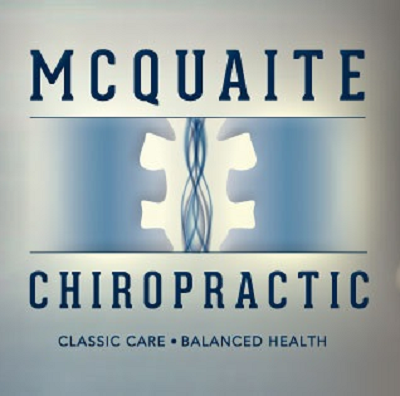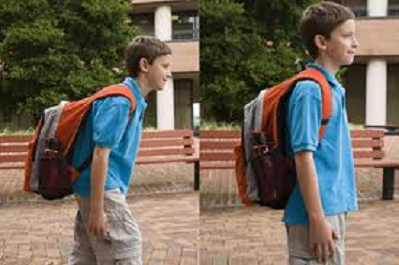“Stand up straight!” It’s the refrain of parents everywhere. Whether slumped over their phones to heavy backpacks, today’s kids are at risk of all types of back and neck pain.
Backpack safety is something to consider. Dr. Jeff McQuaite of McQuaite Chiropractic-Doylestown has long been a champion of lighter backpacks for student’s safety.
The reason why is heavy backpacks can cause long-term back, neck, and shoulder pain.
It’s such a serious concern there’s even a National School Backpack Awareness Day held in September each year.
Is Your Child’s Backpack Too Heavy?
Several studies link weighty backpacks with persistent back, neck, and shoulder problems in students from elementary school to college. Research suggests that children with back pain often develop chronic symptoms lasting into adulthood, making it all the more important to tackle back and neck pain early in life.
According to Lisa A. Haney, Director of Rehabilitation Services at Pennsylvania Hospital, “More than 40 million U.S. students carry backpacks, and most of them are unaware that overloading them or carrying them incorrectly can set them up for a lifetime of problems,” says Ms. Haney. “It’s up to parents, teachers, and schools to help spread the word about backpack safety and help our kids lighten their loads.”
Such an overloaded backpack sends upwards of 8000 children to hospital emergency rooms many years.
A 2004 study from the University of California showed that 64% of students between ages 11-15 reported back pain from their backpacks, with 21% reporting the pain lasted more than 6 months. Two studies from Boston University showed that 84% of students reported pain and discomfort from backpack usage. Another study published in Work Magazine revealed that 31% of the students reported having difficulty participating in activities as a result of pain. Nearly 25% of students reported having difficulty carrying their books during school because of pain, and 19% reported having difficulty playing sports. To carry your essentials, you should look into the best backpacks for school to help make your choice easier.
It’s Not Just Backaches
Dr. McQuaite notes “Each year, I grow more concerned as I see more and more children with problems associated with backpacks. Complaints include back pain, headaches, neck and shoulder pain, and numbness in the arms and hands. Studies show a direct connection to these problems with overloaded and ill-fitted backpacks. The body is trying to compensate for the change caused by the backpack’s added weight. The spine in particular can be affected as it bends and twists to reposition this added backpack weight. When this happens pain usually results.”
There are other problems associated with backpack overload too. Called “Cervicobrachial syndrome and or Thoracic Outlet Syndrome”, a heavily loaded backpack causes the shoulder straps to compress delicate nerves, arteries, and veins passing underneath. This can lead to numbness and tingling in the arms.
Dr. McQuaite says “A lot of these problems can be addressed by using proper body mechanics. While they may not be “cool”, it will help prevent the possibility of long term damage.”
In an effort to cut down on the number of these injuries, Dr. McQuaite offers parents the following backpack safety advice
10 Backpack Safety Tips
- Never let a child carry more than 10-15% of his or her body weight in the backpack.
- Load the heaviest items closest to the child’s back and arrange books and materials to prevent them from sliding.
- Always wear both shoulder straps. Wearing only one strap can cause a child to lean to one side, curving the spine and causing pain or discomfort.
- Select a pack with well-padded shoulder straps. Too much pressure on the shoulders and necks can cause pain and tingling.
- Adjust the shoulder straps so that the pack fits snugly to the child’s back. The bottom of the pack should rest in the curve of the lower back. The backpack should never be more than four inches below the child’s waistline.
- Use the waist belt, if the backpack has one, to help distribute the pack’s weight more evenly.
- Check what your child carries to school and brings home to make sure the items are necessary to the day’s activities.
- If the backpack is too heavy, consider using a book bag on wheels if your child’s school allows it.
- Choose the right size pack for your child’s back as well as one with enough room for necessary school items.
- If a student is experiencing back pain or neck soreness, consult your physician or chiropractor.
The Benefits of Ergonomics
If your child isn’t carrying a backpack but is taking classes online, you want to make sure they maintain good posture during computer time. Setting up an ergonomic workstation for your child will help them remain pain-free. Otherwise, they’re at risk for similar injuries such as back, shoulder, and neck pain. Ergonomics is simply about the ability to maintain good posture with a computer screen, keyboard, and chair at the right height. It extends to backpacks and “text neck.”
Dr. McQuaite also points out that parents shouldn’t put a child’s name on the outside of a backpack, for safety reasons: When the child is walking home from school, you don’t want a predator to be able to call him or her by name.
He also recommends that parents put their child’s contact information somewhere in the bag, just in case anything happens to them.
Backpack Safety is critical for the long-term health of your child. Help your student have a terrific year and skip the backpack pain.


